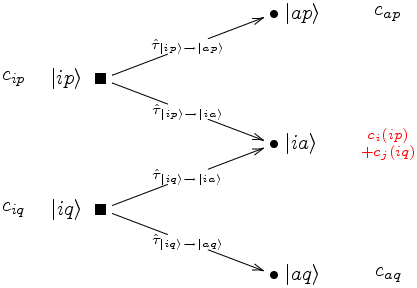| | |
(1) |
The CI methods use a linear ansatz for the wave function according to
| (2) |
Full CI
Solving the CI problem in the full antisymmetric many-body space spanned
by the one-particle basis is called full CI. Although the computational
cost for a full CI calculation scales exponentially with the size of the system
the obtained solution is still not exact
due to the limitation of the one-particle space. However, full CI calculations are very
important for benchmark calculations of other methods
since they provide the best possible solution within a given
one-particle basis.
Truncated CI
The the full CI expansion is rather inefficient because most of the
expansion coefficients are very close to or virtually zero. Starting from
an SCF calculation usually single and double spin orbital substitutions
in a Slater determinant yield a reasonable approximation (CISD). One may systematically
complete the space by including triples T, quadruples Q and higher substitution
levels in the original Slater determinant (CISDT, CISDTQ, ...) and
reach the full CI limit.
Writing the CI-wavefunction in terms of excitation operators we get
| | |
= | c0| 0 |
|
| = |  |

Multi-reference CI (MRCI)
There may be situations (e.g. spatial or spin degeneracy, dissociation,
excited states, transition states) when the simple effective one-particle
picture of the Hartree-Fock approach using a single determinant
is no longer a valid approximation. As a consequence there is more than one
dominant determinant in the CI expansion. For a reasonable approximation one should
still include at least single and double substitution from each reference.
This leads to the concept of multi-reference CI. The expansion set is given by
the unified set of all n-fold substitutions from each reference and we may
write the MRCI wave function as:
| | |
= |  |
|
| = |  |

Individually selecting Multi-reference CI (MRCI)
In many applications the size of the wavefunction although truncated at
single and double substitutions is still not manageable.
But many (typically over 90%) coefficients of
determinants are still almost zero. So it seems
to be natural to select only those determinants which result in a significant contribution
to the energy. In order to make sense this selection must of course be very cheap.